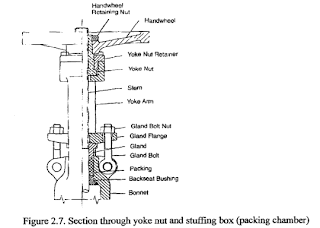Three styles of wedge gates are available:
1. the one-piece solid (commonly known as a solid wedge),
The solid wedge gate was, at one time, the most frequently used design. It is still the simplest, most economical style and is the most resistant to corrosion and vibration. It is also ideal for steam service and turbulent flow. A solid wedge gate, modified by adding a stem cavity, is used with the NRS. It is the standard on bronze, cast iron, and small steel valves.
- The flex wedge gate is cast with a circumferential groove around its perimeter or one is machined into it. This groove produces the flexibility that allows the seating surfaces of the wedge to move independently and adapt to minor inaccuracies in seating-surface angles and movement of the valve seats owing to pipeline loads or thermal expansion of the piping system.
- It minimizes wedge sticking when the valve is closed when hot and opened when cold. This ability to flex while retaining one-piece construction makes the flex-wedge design the best one for most applications. It is now the standard for large steel valves.
- The split wedge gate is made in two parts with a ball-and-socket type joint between them, thereby providing complete flexibility to compensate for seat movement andseat angle machining tolerances. The split wedge gate is found on small bronzevalves in which the flex wedge is not practical and on large valves made of stainlesssteel and other expensive materials.
- In the case of expensive materials, it is more economical to provide split wedge gates than the thick body walls needed to resist seat movement owing to line loads and thermal expansion. The split wedge gate is not recommended for high velocity or turbulent flow in which the two halves could vibrate and chaffer.
Wedge gates are typically guided by ribs located either in the valve body or on the wedge, and fithng into mating slots in the sides of the wedge or in the valve body, respectively.
All gate designs are used with body seats that are either integral with the body (machined surfaces on the body), separate seat rings pressed or screwed into the body, or hard material weld overlayed in the valve body and then machined as an integral seat. For steel valves, which are used in high-temperature and high-pressure applications, the separate seat rings are also seal-welded to the body. This ensures against leakage between the body and the seat ring.









